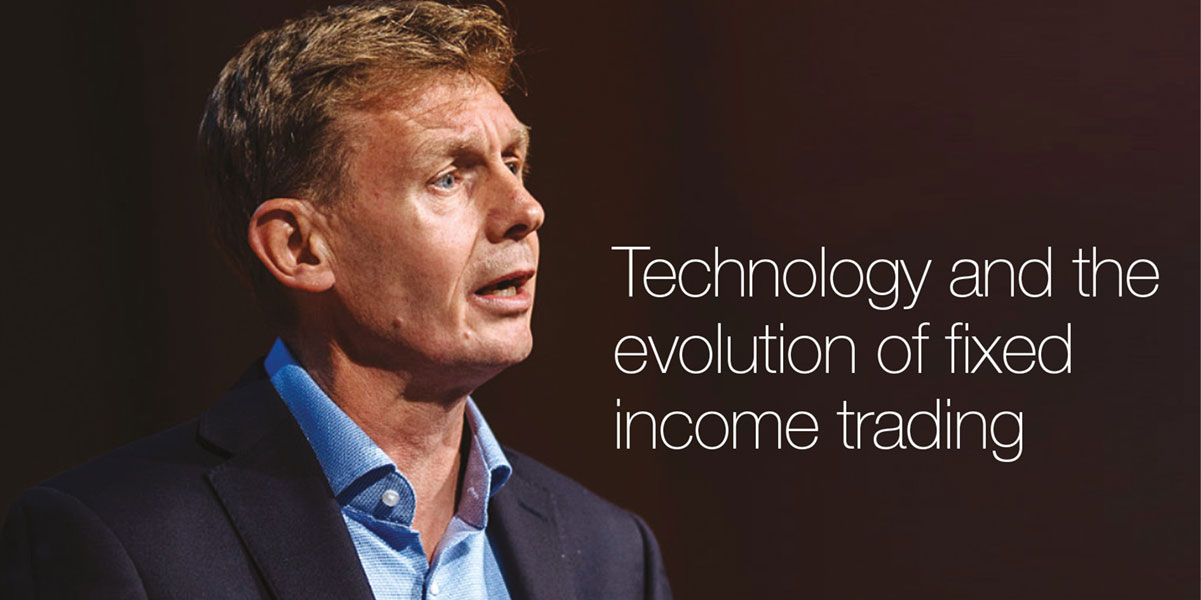Steve Toland, co-founder TransFICC
The fixed income and derivatives market is evolving, rapidly migrating away from the phone onto electronic venues. Electronic trading satisfies the requirement to capture accurate data and report it to regulators and compliance departments, combined with the need for liquidity, and the demand for increased efficiency in the middle- and back-office.
A fragmented market
As a result of these drivers, there is the market-wide issue of fragmentation, where there are now 164 e-trading fixed income venues (according to the comprehensive list compiled and maintained by John Greenan, from Alignment Systems). And there are more in the pipeline.
This creates a major problem for trading firms, as they struggle to connect their systems to trading venues. Many of these venues have different workflows or different APIs for each asset, meaning that there are more than 230 API specs for the 164 venues.
Connecting to any one of these new venues typically takes 3-6 months and even then, there’s no guarantee that there won’t be a new ‘must have’ platform to replace it a year later. Plus, venues periodically upgrade APIs for new functionality, for regulatory reasons or to add new fields. It takes time and resources to code and test before updated systems can be released into production.
The scale of the problem becomes evident when you multiply the workload required to connect to a venue by the number of venues on which you want to trade. There are a core of about 30 e-trading venues, but in some instances, the large trading firms need to connect to, and manage connectivity with, 70 venues.
Automating workflows
In fixed income, as well as venue fragmentation there is also fragmentation by asset type (EGB, UST, Corporates, IR Swaps, CDS, MBD, Comm Paper, Repo, etc) and different types of workflows (RFQ, RFS, RFM, Click and Trade, CLOB, Auctions, NC Lists, AON, Process Trades, etc). From a technology perspective that means dealing with complex requirements, with stakeholders requesting different workflows because of different market nuances.
Furthermore, to automate RFQ workflows, trading firms need to maintain a state model to track allowed transition messages for a given negotiation. They also need to hold all events in memory and replicate/journal so they can meet resilience, scaling and compliance requirements.
Until recently, with the exception of rates, manual trading was the norm for most fixed income markets because only humans could successfully manage the varied and often complex workflows. As margins narrow and costs increase, there is a drive towards automating as much of trading workflows as possible, where removing manual intervention reduces the cost of the trade, improves speed and, importantly, minimises the risk of human error.
In the past many workflows were considered too complex to automate, but by combining modern technology with deep domain knowledge some vendors can now build software to automate even the most difficult workflows.
The need for speed?
For many years firms trading in fixed income, FX and equities have invested in co-located infrastructures, responding to market demand for low latency connectivity. Opinions are now changing – certainly in fixed income – where firms are starting to adopt a combination of co-location and the cloud.
It is well understood that the location of infrastructure in relation to data centres impacts speed, where co-locating in a data centre is faster than cloud infrastructure or on-premise technology.
Raw speed is important in commoditised markets like FX and equities, where the same products are quoted on different venues and many firms using trading algos, resulting in a race to best price. Traders need low latency connectivity to compete with high frequency traders.
But fixed income is different, with different assets trading in many different ways. Speed is certainly important, but so is accessing different types of bonds or enabling complex workflows.
The cloud – scalability on demand
The cloud is increasingly being seen as an appropriate infrastructure for many types of fixed income trading. The cloud wins where flexibility, scalability and low costs are important – in workflows like RFQ, axes, post trade or manual intervention.
With elastic compute capability and the flexibility to spin up infrastructure programmatically, the cloud provides a cost-effective solution compared to installing new servers at a typical cost of $10,000 each. Not only is the cloud significantly less than the capex of a new server (or multiple servers), but infrastructure upgrades can also be completed in minutes as opposed to days or weeks.
Of course, one size doesn’t fit all. Some trading firms require low-latency co-location, like those consuming premium market data or accessing a CLOB. In these cases, there is a need for speed.
The result is that we see trading firms increasingly move to an infrastructure where they build as much as possible in the cloud and combine that with co-located infrastructures where low-latency trading is essential.
Flexible modular technology
In the past, firms have built their own technology stacks or implemented single vendor solutions. That has now changed, as they now look for components that plug and play, where commoditised services are outsourced to the best provider and proprietary systems are built or retained only when they differentiate the trading firm’s offering. The key to this is operating a technology stack using modular components with minimal integration.
For most of the medium and large fixed income trading firms the days of implementing a single application are over. Many are in the process of migrating away from legacy vendor systems as they demand a more flexible and modularised approach.
Looking forward
Quite simply, we expect to see more e-trading in fixed income and market fragmentation continuing, meaning a focus on managing connectivity.
Automating workflows will drive the wider adoption of electronic trading for many in the market. Workflow efficiency may not be the most interesting topic, but it cuts costs and reduces errors, which will ultimately improve trading profits.
Infrastructure using the cloud and co-location will become the norm and modular components will be core to all firms’ technology stacks.
©Markets Media Europe 2025
























